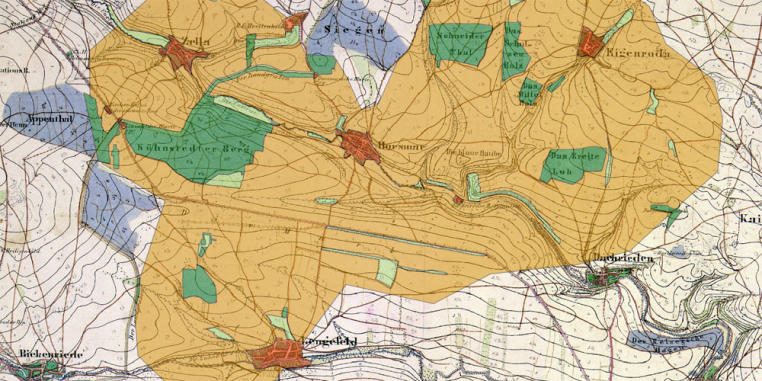

Effects of historical land-use change on species richness and community composition in fragmented and newly created habitats
Project description
Historical land-use change may have considerable influence on current communities of species. For example, previous land use may have had long-lasting effects on site conditions and “old” species may persist in the community or in the soil seed bank. At landscape scale, land-use change may lead to drastic changes of the area and connectivity of habitats. Strong changes of landscape structure may affect species richness and composition of today’s communities.
In the frame of the DFG priority programme Biodiversity Exploratories, we study effects of historical land use between 1850 and 2010 on current communities of plants and arthropods in grasslands. For this purpose, the historical land use will be reconstructed from digitalised maps (e.g. Prussian “Urmesstischblätter”) in GIS.
Since 5/2018 the project moved to
Thünen-Institut für BiodiversitätBundesallee 6538116 BraunschweigObjectives
- Historical land-use and landscape analysis: we will digitise land use/ land cover from historical maps, analyse land-use trajectories at local and landscape scale, and calculate landscape metrics to quantify historical landscape structure in the Schorheide-Chorin and Schwäbische Alb Exploratories. This has already been completed for Hainich-Dün in a preliminary study.
- Modelling the effects of historical landscape dynamics on species richness of plants and arthropods: here, we will test the hypotheses that historical habitat configuration affects current species richness and that it is more important than the current configuration if there was a marked change of grasslands (increase, decrease). Further, we will specifically analyse cases of habitat creation and expansion (e.g. in Hainich-Dün), and fragmentation, the latter including modelling of possible extinction debt.
- Modelling effects of past land use and historical habitat configuration on trait composition of communities: under this objective, we will model historical effects on multivariate trait composition, proportion of certain species groups (e.g. habitat specialists) and on community (weighted) means of traits.
- Quantitative modelling of interactions between species traits and effects of past land use and historical habitat configuration: for this purpose, we will use a new modelling approach based on Generalized Linear Mixed Models to quantify how much certain traits modify the relationships of species occurrence to past land use and historical habitat configuration.
Funding
The project is funded by the DFG for the project duration of three years.
Partners
Scientific investigators:
- PD Dr. Jan Thiele (Outside Lecturer Westphalian Wilhelms-University Münster and Thünen-Institut für Biodiversität)
- Prof. Dr. Wolfgang Weisser (Technical University of Munich)
Publications
There are no publications untill now.


